Electrolux washing machine power
 It is not for nothing that the power consumption of an Electrolux washing machine must be indicated on the factory label - the efficiency of the machine depends on it. If you choose too “gluttonous” equipment, then even a low cost will not save the situation, since housing and communal services bills will cover all the benefits. In order not to make a mistake, you need to evaluate this parameter along with the price tag, capacity and functionality.
It is not for nothing that the power consumption of an Electrolux washing machine must be indicated on the factory label - the efficiency of the machine depends on it. If you choose too “gluttonous” equipment, then even a low cost will not save the situation, since housing and communal services bills will cover all the benefits. In order not to make a mistake, you need to evaluate this parameter along with the price tag, capacity and functionality.
But first you should know what power is, how it is measured and how it benefits the buyer. Let's look at the nuances and consider the most economical washing machines from Electrolux.
How to calculate this parameter?
The power consumed by the equipment is calculated at the factory, and in a strictly defined order. Everything happens in practice: cotton laundry is loaded into the washing machine at the maximum capacity limit, after which a mode starts with heating the water to 60 degrees. The machine is connected to special equipment that detects the electricity “eaten” during the cycle. The resulting figure is divided by the weight of the washed items and the duration of the program. As a result, the number of kilowatts spent by the unit per hour to clean 1 kg of cotton fabric is displayed.
In reality, the power consumed by the washing machine differs from the “norm”, as the washing conditions change.
The power recorded during testing is not a constant parameter. It remains this way only under given conditions: when washing cotton with maximum drum load and heating up to 60 degrees. This rarely happens in everyday life; sometimes they wash synthetics or wool, using a fast or economical program and with a half-empty tank. All this affects final energy consumption.More precisely, the final kilowatts are affected by: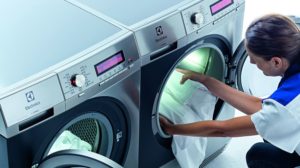
- type of washing machine (semi-automatic machines are more economical than automatic machines);
- type of fabric (synthetics, blends or silk differ from cotton in weight and fiber structure, which affects the watts spent);
- running program (low-temperature and accelerated modes do not require long-term operation of the heating element or engine, so when they are turned on, the machine consumes less);
- loading the drum (the more laundry is washed at a time, the more intensively the units work and the more electricity is consumed).
Despite the variability, the power parameter remains important and indicative. With its help, you can compare models, choosing the most economical, and, therefore, profitable unit. The calculation is simple: if the equipment “eats” less kW when washing cotton at high temperatures, it means that the machine will wash more economically on other programs and fabrics.
Let's decipher the signs
Power consumption, like other key parameters of the washing machine, must be indicated on the factory label and store price tag. For the convenience of the buyer, the indicator is not given by a number, but is indicated by the letter from A to D in accordance with the energy efficiency scale. On modern machines, a “+” is often added, which indicates greater efficiency of the equipment. As a rule, modern washing machines are assigned one of the generally accepted energy efficiency classes:
- A+++ is the most economical class, in which the machine washes a kilo of cotton, spending 0.13 kW per hour;
- A++ - no more than 0.15 kilowatts per hour are “eaten up”;
- A+ – maximum consumption is 0.17 kW;
- A – the washing machine “winds” 0.19 kilowatts every hour;
- B - here the machine can spend an hour cycle with clap from 0.23 kW;
- C – permissible energy consumption up to 0.27;
- D is the most uneconomical class, since about 0.31 kW per hour is “wound” per kilo of cotton.
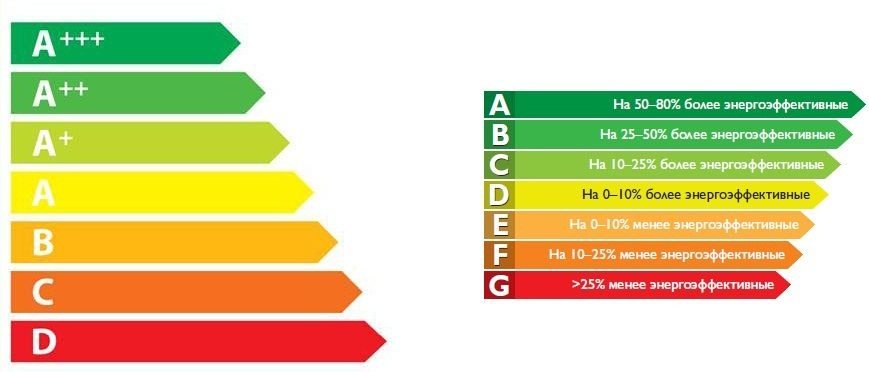
Electrolux class A+++ machines are considered the most economical.
Based on the energy efficiency class, you can estimate future costs. It is enough to multiply the given figure by the maximum Electrolux load weight. For example, a machine with a capacity of 5 kg and class A+++ will require about 0.65 kilowatts for one hourly cycle.
It is important to remember that the calculations will be approximate. In everyday life, washing machines operate in “non-sterile” conditions, at different temperatures, different loads, and not only with cotton laundry. Much also depends on the duration of the cycle: the shorter the program and the less heating, the more economical Electrolux washes. For semi-automatic machines, a different interpretation of energy efficiency is provided, since the gradation of maximum power varies greatly.
How “gluttonous” are Electrolux?
It’s difficult to come across a very “gluttonous” Electrolux: class “D” machines are not produced at all due to their high cost, and “C” and “B” are very rare. As a rule, even budget models in stores are assigned a minimum level of “A”. Which brands from this manufacturer are the most profitable? Let's look at a mini-review of top-end washing machines.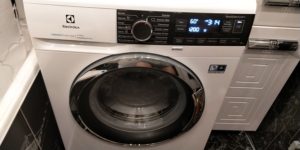
- Electrolux PerfectCare 600 EW6S2. A free-standing front panel that attracts not only with its stylish design with a black touch-sensitive dashboard, but also with its efficiency. The machine is assigned class “A+++”, as it consumes about 0.12 kW per hour. The drum can hold a maximum of 7 kg of laundry, the control is electronic, and there is a digital display. The model will also delight you with a spin speed of up to 1200 rpm, 14 programs and complete protection against leaks.
- Electrolux PerfectCare 600 EW6S4.An inexpensive washing machine with a capacity of up to 4 kg, a display and touch controls. In terms of power consumption, a model with energy efficiency class A+ is in the economical range. Other characteristics are not inferior: spin speed up to 1000 rpm, modes – 14, noise level – up to 58-77 dB.
- Electrolux EW6F4R21B. "Giant" with a capacity of 10 kg. Despite the impressive load, the machine “eats” a record 0.06 kW, which indicates the high efficiency of the equipment. It is interesting that the volume of water consumed during the standard cycle is modest - about 46 liters. At the same time, the functionality of the model is at the same level: spin speed up to 1200 rpm, child protection on the panel, 14 programs and delayed start up to 20 hours.
- Electrolux EW7WR447W. Front washing machine with 7 kg drum. Its “trick” is the presence of a 4 kg dryer that operates based on residual moisture. The expanded functionality has affected the efficiency of the model: it is assigned energy consumption class “A”, and water consumption reaches 92 liters per cycle.
It is irrational to ignore the power consumed by the washing machine - this parameter will help you save on housing and communal services. The main thing is to look at Electrolux as a whole, comparing the kilowatts consumed with the price, capacity and functionality.
Interesting:
Reader comments
- Share your opinion - leave a comment
Categories
Washing machine repair


For buyers

For users

Dishwasher


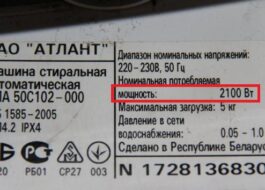
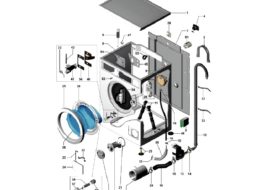

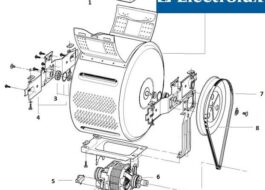
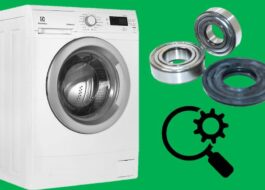










Add a comment